Disposal of fluorescent lamps: where to dispose of used devices
Disposal of fluorescent lamps should become a mandatory procedure for every person and any organization.Since they will be safe only as long as the structure maintains its integrity.
The reason for this is the presence of mercury vapor in their flasks, which, even with short-term contact, can cause serious, and sometimes irreparable, damage to human health, water, and soil.
In this material we will tell you why recycling of fluorescent lamps is needed, where to dispose of used devices and how to dispose of them.
The content of the article:
Why is recycling necessary?
The design of each fluorescent lighting fixture contains up to 7 milligrams of mercury. At first glance, this is not enough. For example, in any thermometer there is ten times more of this substance.
But the peculiarity is that just a few grams of mercury vapor have a 16 times larger contact patch with the surrounding air than several kilograms of the same metal in a liquid state.
As a result, the contents of the flask saturate up to 50 cubic meters of space with poison and the permissible norm will be exceeded 160 times.

Therefore, in the event of depressurization of a fluorescent lamp of any manufacturer in the room, a situation is created that belongs to the first group of danger.
That is, the highest, since even a short exposure can cause serious damage to the cardiovascular, immune, nervous systems, gastrointestinal tract, visual organs, and skin.
In addition, mercury can quickly accumulate in the human body, resulting in long-term exposure. No less dangerous are fluorescent lamps thrown into common garbage disposals in apartment buildings or in the private sector.
In this case, microorganisms actively influence mercury vapor, as a result they turn into an easily soluble and very stable compound (methylmercury), capable of poisoning hectares of water and soil for decades.
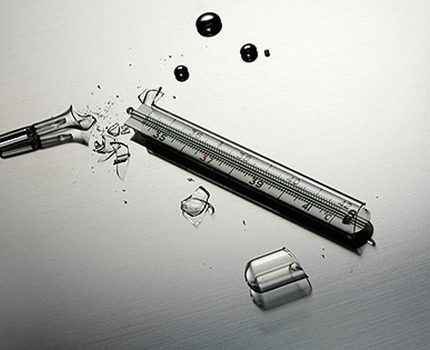
The problem is complicated by the fact that until recently hundreds of millions of fluorescent lamps were sold annually in the post-Soviet territory. Which are now beginning to develop their resource.
User input into the recycling process
Theoretically, this operation does not pose any difficulties. So, all a person needs is to perform a few simple actions in a certain order.
Which are the following:
- A burnt-out fluorescent lamp must be packaged in a complete plastic bag. Which will prevent mercury poisoning in the event of unexpected depressurization during the disposal procedure.
- Take the device to a collection point.
It should be remembered that the dismantling, transportation, and storage of a used lighting device cannot be treated negligently.For example, placing it in a regular trash bag or leaving it in another place where accidental damage may occur.
After completing all of the above, the owner’s mission will be considered completed. But in practice everything is more complicated, the reason for this is the insufficient number of places intended for collecting fluorescent lamps.

According to the governing documents of almost all countries in the post-Soviet space, the collection of unusable lighting fixtures containing mercury should be handled by the management of apartment buildings. These include residents' associations, management organizations, and also such responsibilities are assigned to housing and housing departments and REUs.
For example, in Moscow, absolutely all housing maintenance offices are equipped with the necessary equipment for collection and are serviced by trained specialists.
But the majority of the country’s housing and communal services managers, for various reasons, ignore such requirements, so these items are quite rare in a number of regions. But they exist, at least in all major cities.
And to find the nearest one, it’s enough:
- use the Internet;
- call back to the management organization, housing office, Ministry of Emergency Situations.
Often, officials are helped out by commercial organizations and collection points for all kinds of mercury-containing lamps are created in retail chain stores, and often even at battery collection points. For example, in Russia they are available in many IKEA supermarkets.
In addition, concerned citizens can call on the management of housing and communal services in writing to fulfill their duties. Moreover, equipping the point is a simple procedure. Because all you need to do is install a small, durable container.
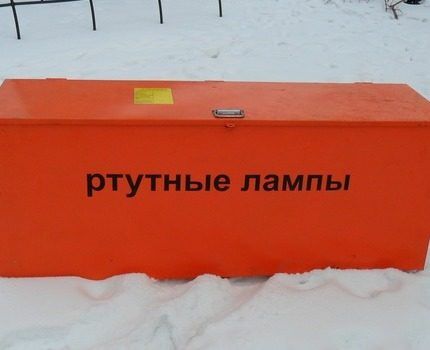
And the reception can be carried out by full-time electricians of housing and communal services, management companies, who subsequently transfer the devices that have served their purpose for recycling, which is convenient for residents.
In addition, such an order is not difficult to organize, since special skills or any special tools are not required for this.
It is definitely worth remembering that at lamp collection points, responsible persons will only accept sealed products, that is, intact ones with no signs of damage.
If they are in unusable condition, they should not be transported or attempted to be disposed of. Because it can be dangerous to health. In view of this feature, when the lamp in the room has depressurized, it is better to call representatives of the Ministry of Emergency Situations.
You also need to know that all products that have not reached the warranty period can be returned to the selling organization. In such cases, there is even the possibility of a refund or replacement.
The duration of the warranty period can be up to 2 years; sometimes you can find out the exact information by studying the data indicated on the packaging.
What if the collection point is far away?
It often happens that a fluorescent lamp has exhausted its intended life, so it needs to be disposed of, but the collection point is not close and it is not profitable to go there, and there is no desire to simply throw it away.
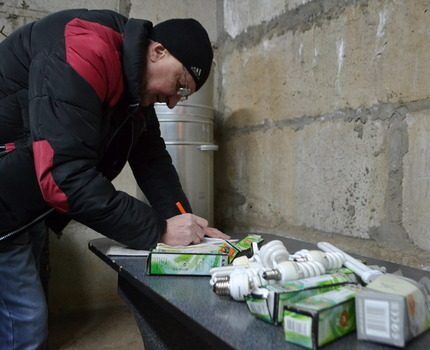
In the situation described, a person can simply pack the flask in a whole plastic bag and put it in some kind of durable container.
Which can be any rigid container that can prevent depressurization of the lighting device due to careless handling. Next, it must be placed in a place that children and animals cannot reach.
The lamp can be stored in this way for a long period, but still, it should not exceed six months. And the specified time is quite enough to find a convenient way to deliver the lamp to the collection point.
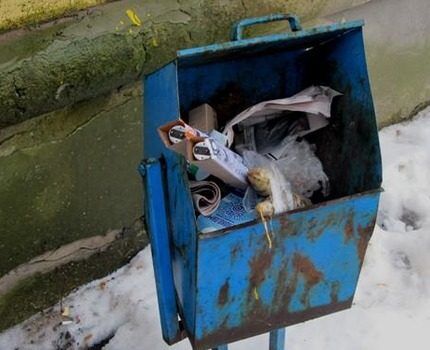
In addition, many large cities have commercial organizations that dispose of mercury-containing products. The specialists of which carry out the collection, and they arrive at the right place when called. But in most cases you have to pay for such a service.
As a result, it can only be beneficial to large enterprises that have to solve the problem of dozens or hundreds of burnt out lamps.
Disposal of a damaged lamp
No one can be immune from any unpleasant accidents. Therefore, it is always necessary to remember that sometimes it is necessary to get rid of a burnt-out device urgently and you need to be prepared for this. After all, efficiency determines whether damage will be caused to health or the environment.
Safety precautions for product damage
So, if illuminating any room Fluorescent Lamp was broken or damaged, then the person, in order to avoid poisoning, needs to take prompt measures.
Which include:
- evacuation of people and animals;
- ventilation of the room;
- cleaning up the remains of the flask;
- calling representatives of the Ministry of Emergency Situations.
It should be remembered that evacuation must be carried out immediately after detecting damage to the fluorescent lamp. At the same time, there is no need to run headlong somewhere, just go to the next room.
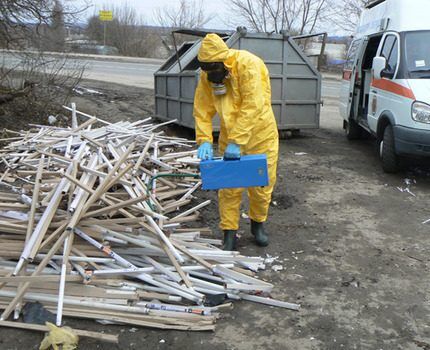
The room itself where the depressurized lamp is located must be insulated, that is, the doors must be tightly closed. If they are not there, then you should use fabric or other available material. And only after that open the windows for ventilation.
The procedure should be exactly in the described order due to the fact that when a draft ventilates the entire apartment, there is a high probability that significant accumulations of mercury vapor will spread throughout its entire area, and some of them will accumulate in “dead zones” and can affect health residents.
Insulating the room will also help prevent broken glass and accumulated substances from spreading to other rooms.
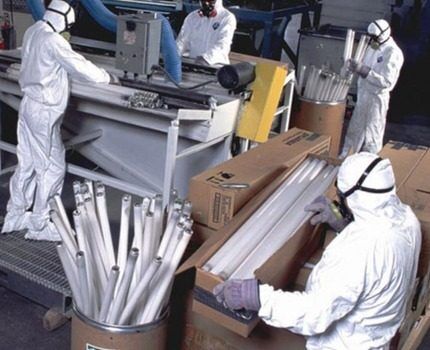
The duration of ventilation should be at least 20-30 minutes. During this time, the bulk of the mercury vapor will evaporate and people will be able to clean up. Why should the respiratory tract be protected with a cotton-gauze bandage or simply a damp cloth?
For work, you can use two pieces of thick cardboard. One of them will serve as a dustpan for a person, and the second should be used as a broom, raking up the remains of broken structural elements.
You should not help yourself with unprotected hands, as mercury particles easily penetrate through the pores of the skin. Which can lead to serious poisoning in a matter of minutes.
If parts of a broken lighting fixture fall on the carpet or soft children's toys, they should be hung outside for thorough ventilation. The duration of which should be several hours.
After which all of the listed things can be used in everyday life without any additional processing. Since after the mercury vapor has evaporated, it will become absolutely safe.
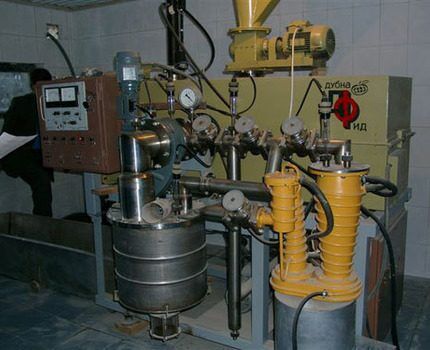
The collected glass cullet should not be thrown away anywhere; it is better to pack it in cellophane, a tightly closed container, or any other container.Next, the remains of the fluorescent lamp should be handed over to the Ministry of Emergency Situations, who must be called.
Even if the owners of the premises successfully cope with the liquidation of the consequences on their own, the presence of rescuers is necessary so that they check the suitability of the housing or any other premises for the presence of people there.
And if necessary, surfaces in contact with mercury can be treated with special solutions, which will finally eliminate the danger to human health.
All of the listed actions after depressurization of any fluorescent lamp must be carried out without fail, and residents should not be reassured by the absence of any signs of danger.
Since mercury vapor has no color or odor, which means that without special equipment their presence cannot be detected. Although for a short time the concentration of the substance in the room where the lamp is broken will exceed the permitted limit by tens, or even one and a half hundred times.
How is recycling carried out by specialists?
Handing over fluorescent lamps to a collection point is only the first stage of recycling. Since this is a rather lengthy and complex operation that can only be performed with the help of special equipment.
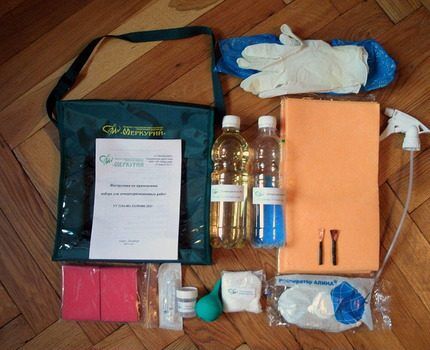
The next stage of recycling is the cutting of lighting fixtures, which is done using a device called a demercurizer.Where they are crushed into small elements in order to release all mercury particles.
Which are then bound by a sorbent and enter the condenser, where they precipitate and turn into liquid metal. The final stage is to send it to enterprises for further use.
Another type of processing used allows the vapors to be frozen in a vacuum chamber. This also makes it possible to obtain liquid metal, exactly the same as is used in thermometers. Further it can also be used in industry.
In addition, an important task during recycling is the separation of several grams of phosphor - this amount is contained in each fluorescent lamp. Although it is less harmful than mercury, it still poses a danger. Therefore, it is subject to mandatory burial.
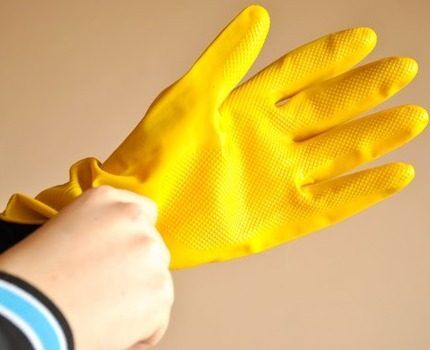
But even waste lamps pose some danger to people. And to level out this factor, the phosphor and other parts, during transportation to processing sites, are packaged in sealed containers and sprinkled with cement, which is capable of binding the remaining mercury vapor.
Our website contains material on the topic: why and how to replace fluorescent lamps with LED ones. We recommend reading it too. Read more - read Further.
Conclusions and useful video on the topic
A video about the dangers of mercury-containing lamps and how to properly get rid of them when the resource is exhausted:
The following video shows how sealed flasks containing harmful vapors are recycled:
The recycling procedure for ordinary citizens and organizations consists of transferring burnt-out fluorescent lamps to equipped collection points. This is not always convenient, and businesses generally have to pay, but it is necessary to do it. Since failure to comply with the requirements leads to a significant negative impact on the environment, and therefore on human health.
If you have any questions about the topic of the article, please leave comments in the block below. There you can share your experience and give practical advice to visitors to our site.




The problem with the disposal of fluorescent lamps has always existed and will continue to exist until every person understands the danger this lamp poses. Every day I take out the trash from my apartment and there are discarded fluorescent lamps in the trash cans, some of them are already broken and it’s all in the courtyard with residential buildings, in general it’s kind of terrible. Serious fines need to be introduced for this, like for terrorism, then maybe they will start thinking with their heads and not with their ass.
Or maybe, first of all, we need to clearly EXPLAIN to people why it is dangerous to throw away fluorescent lamps and how to properly dispose of them? Punish, fine, ban, keep out! Maybe this is enough already? Moreover, fluorescent lamps are used to a greater extent by the younger generation, who themselves should be interested in preserving their health.
Often there is simply nowhere to dispose of used fluorescent lamps.In large cities there are both special services and those that have containers for collecting used magic-type devices. IKEA. In small towns, people, even if they know about the dangers of this waste, simply do not have the opportunity to properly dispose of it.
Another aspect is the enterprises, which have a much larger number of lamps. Disposal is not only troublesome, but also expensive, so only a small part is officially handed over. The lion's share is simply thrown into the general trash. This is where the real harm is.
Not a single store selling fluorescent lamps has posted notices on where to dispose of used lamps. Personally, I have several of these lamps lying around. And I don’t know where to put them without problems. Every yard trash bin should have a container for collecting used lamps. Otherwise they advise you to contact the Ministry of Emergency Situations!!! Yes, if I had known about this earlier, I would never have bought these “energy-saving” lamps! In general, a country of fools.
everyone understands the danger perfectly. write the address and enterprises working on the processing and disposal of such lamps. I've been searching periodically for 3 years.